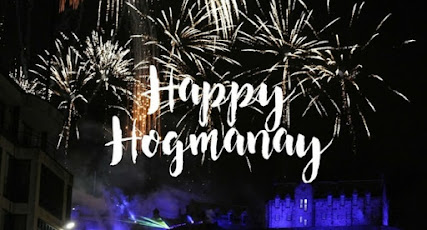Hogmanay
New Year's Eve is a major festival for a large number of individuals everywhere. However, it is an especially serious deal in Scotland where it is called Hogmanay. Merriments happen all over Scotland and keep going for three days, starting toward the finish of December and finishing on 2 January. Scottish individuals truth be told have two days of occasion following the festivals, dissimilar to the remainder of the UK, which simply has one on New Year's Day.
Hogmanay is the Scottish name for new year festivities. It isn't known precisely where the word comes from, in spite of the fact that it is accepted to come from the French word 'hoginane' signifying 'celebration day'. It is thought to have first been utilized generally following Mary, Queen of Scots' re-visitation of Scotland from France in 1561.
"The name could likewise come from the Anglo-Saxon 'haleg monath' signifying 'heavenly month'." Some say it could emerge out of the Scandinavian 'hoggo-nott' signifying 'yule'. "The most probable source is by all accounts French. In Normandy, presents given at Hogmanay were 'hoguignetes'."
First balance is a conventional piece of Hogmanay festivities in Scotland, despite the fact that it doesn't occur these days however much it used to - and is probably going to be more limited in 2021 due to Covid restrictions. First balance is the point at which you visit companions or family following 12 PM to turn into the principal individual to visit them and go into their home in the new year.
Your absolute first foot - the principal individual to visit you in the new year - ought to generally be a tall, dim haired man. That is said to trace all the way back to the Viking intrusions, as Vikings were regularly more pleasant haired, so the appearance of a blondie man might have implied unavoidable danger! It could likewise have establishes in agnostic customs of denoting the appearance of the dull portion of the year and connecting with the strange domain of obscurity and spirits, and mollifying them with food and friendliness.
Dark bun - a dull rye bread - is generally given as a first balance gift to guarantee that individuals residing in the house you're visiting don't go hungry in the year ahead. First footers likewise generally carry a piece of coal to guarantee the house stays warm before long.
In front of the new year, it is likewise customary for individuals to clean their home and eliminate any old remains in the fire. This represents getting out the old year to welcome in the new one. The huge Hogmanay festivities date back to agnostic occasions a long time prior, when individuals used to check the finish of the collect and the year's end with a celebration called Samhain.
Afterward, this turned into a midwinter yule celebration, which proceeded with when Catholicism turned into the country's primary religion. The time of festivities became known as the 'stupid days' with individuals eating and drinking parcels, appreciating gatherings and huge fires, and visiting and facilitating neighbours.
Be that as it may, in 1560, there were heaps of contentions concerning how the Christian religion ought to be polished in a period known as the Reformation. Individuals acquiring strict changes didn't support all the celebrating and they restricted or emphatically deterred feasts that were related with Catholicism, including Christ's Mass - that is, Christmas.
By 1640, an Act of Parliament had formally restricted the Christmas break, so it is accepted that this is the thing that pushed all the celebrating and amusing to New Year instead. Even however this Act was somewhat removed in the late seventeenth Century, new year stayed the defining moment for celebrating in Scotland. It was distinctly in 1958 that Christmas turned into a public occasion in Scotland - later than the remainder of the UK.
So drink some Mead and Scotch, eat some Haggis and live it up.. Slainte'
Hogmanay 2021 - 2022 began on Wednesday, December 29 and ends on Saturday ,January 1, 2022



Comments
Post a Comment